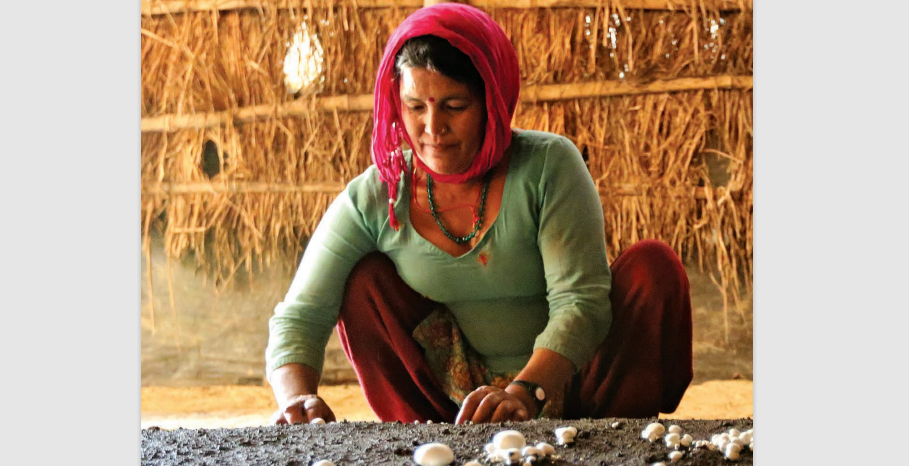Multidimensional Poverty Index 2021
3.1 million Nepalis exit from poverty in five years

By Modnath Dhakal
Kathmandu, Aug 18
Over the five years period from 2014 to 2019, about 3.1 million Nepalis--12.7 per cent of the total population- came out of poverty.
During the period, the Multidimensional Poverty index (MPI) went down significantly from 0.133 to 0.074, according to the Multidimensional Poverty Index 2021 published by the National Planning Commission (NPC) on Wednesday.
Not only the overall poverty but also the intensity has declined from 44.2 per cent to 42.5 per cent and incidence (proportion of people identified as multidimensionally poor) dropped to 17.4 per cent from 30.1 per cent. But the size of poor population in Nepal is still 5 million.
“The reduction in intensity signifies that those who live in multidimensional poverty in 2019 face fewer deprivations, on average, than the multidimensionally poor population in 2014, which is an important achievement,” said the NPC.
It stated that Nepal’s rate of reduction in multidimensional poverty was matched by only one in 32 countries whose MPI values ranged from zero to 0.350 in 2020. Nepal’s MPI value was 0.350 in 2006.
“Nepal’s results are also striking on the international stage in comparison to other countries; according to the 2020 global MPI trend data, no country with a similar starting level of poverty could reduce the MPI or its incidence faster than Nepal,” maintained the report.
The NPC said that it is a remarkable result, given that the Sustainable Development Goals (SDGs) aim is to cut multidimensional poverty by half in 15 years.
“In human terms, it means that 3.1 million people left poverty in a mere five years, with only 5 million left to exit,” it said.
According to the report, the indicators with the highest deprivation levels among the multidimensionally poor in 2014 and 2019 are cooking fuel (29.4 per cent and 16.2 per cent), housing (28.6 per cent and 16.2 per cent), and years of schooling (19.6 per cent and 11.6 per cent).
The MPI is measured in three dimensions: health, education and living standards. Health has two indicators – child mortality and nutrition, education has two – school attendance and years of schooling, and living standards has six indicators – electricity, water, sanitation, housing, cooking fuel and assets.
The report is the first update to Nepal’s official national MPI.
Across indicators, the highest number of people is deprived of housing materials, clean cooking fuel, years of schooling, assets, and nutrition. “Considering the indicator weights, years of schooling and nutritional deprivations contribute most to ongoing multidimensional poverty in Nepal,” read the report.
Poverty high in villages
There are high disparities between rural and urban populations.
While two-thirds of Nepalis live in the urban areas, about 52.4 per cent multidimensionally poor live in villages. “This means that although one of every three Nepalese (32.7 per cent) reside in the rural areas, nearly half of the multidimensionally poor live there, so action in the rural areas must continue to be a national priority,” concluded the report.
Karnali – home of the poorest
Karnali lags behind in terms of poverty reduction. About 39.5 per cent of people in Karnali Province are MPI poor – by far the highest – followed by 25.3 per cent in Sudurpashchim and 24.2 per cent in Province 2.
In contrast, in Gandaki 9.6 per cent of people are multidimensionally poor, while this falls to 7.0 per cent in Bagmati Province.
“However, in terms of number of poor, the largest number live in Province 2, followed by Lumbini Province and Province 1,” read the report.
Province 2 had registered a significant progress in terms of poverty reduction – in 2014, it was the poorest province, whereas by 2019 it was the third poorest.
Karnali Province, the second poorest province in 2014, had the second fastest reduction of MPI, followed by Lumbini Province.
While reductions in cooking fuel and housing deprivations were consistent across all provinces, patterns varied across provinces. For example, Karnali showed strong reductions in water deprivations, whereas Provinces 1, 2, and Lumbini had outstanding progress in improving sanitation, and Province 2 also made great strides in improving child school attendance and nutrition.
Children are the poorest
Approximately 21.8 per cent of children aged below 18 years are MPI poor compared with 15.1 per cent of adults.
Furthermore, 44 per cent of poor people are children under the age of 18, making this group pivotally important for policy.
The report also noted that if the household included a member with a disability, overall poverty rose to 18.3 per cent, versus 17.4 per cent otherwise.
Meanwhile, the report had made an analysis of COVID-19 related deprivations.
More than half of Nepal’s population -63.5 per cent- experienced at least one of the COVID-19 related deprivations such as nutrition, water and cooking fuel.
Likewise, multidimensionally poor people are more affected by additional COVID-19 related deprivation including overcrowding, internet access and hand washing facilities.
“Thus, on top of their experiences of overlapping deprivations which already puts them at a disadvantage, the situation of the poor may be more exposed and susceptible to COVID-19 and its consequences,” concluded the report.
Recent News

Do not make expressions casting dout on election: EC
14 Apr, 2022
CM Bhatta says may New Year 2079 BS inspire positive thinking
14 Apr, 2022
Three new cases, 44 recoveries in 24 hours
14 Apr, 2022
689 climbers of 84 teams so far acquire permits for climbing various peaks this spring season
14 Apr, 2022
How the rising cost of living crisis is impacting Nepal
14 Apr, 2022
US military confirms an interstellar meteor collided with Earth
14 Apr, 2022
Valneva Covid vaccine approved for use in UK
14 Apr, 2022
Chair Prachanda highlights need of unity among Maoist, Communist forces
14 Apr, 2022
Ranbir Kapoor and Alia Bhatt: Bollywood toasts star couple on wedding
14 Apr, 2022
President Bhandari confers decorations (Photo Feature)
14 Apr, 2022










